
21 of the best zero waste gifts for adults and kids.
We've pulled the top 21 zero waste gifts determined by Grove members. Have a look!
Read More

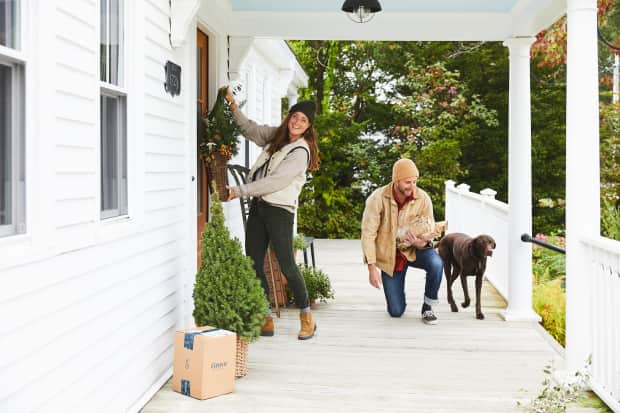
Last Updated: November 9, 2021
Here’s Grove's tips on how to make your holidays both festive and sustainable with eco-friendly gift ideas, reusuable wrapping, and zero-waste decor.
Ah, the holiday season. Seemingly getting longer and longer each year, the U.S. typically celebrates Thanksgiving and the winter holidays (Christmas, Hanukkah, Kwanzaa, New Year's) near the end of each year. Since we've already explored food waste in this guide entitled, Sustainable Thanksgiving: How to Throw an Eco-Friendly Feast, all about reducing food and environmental waste during America’s favorite feasting week, we're now focusing on sustainable decorating, gifting, and wrapping in this little primer with some eco-friendly gifting tips and tricks. Think an eco-friendly party can’t be festive? Think again — and read on for proof!
Household waste increases by up to 25 percent in the weeks between Thanksgiving and New Year’s, much of it having to do with the accouterments of the holiday season — lavish decorations, mountains of gifts, thousands of miles of ribbon and wrapping paper. This year, reduce your holiday carbon footprint by asserting your creativity and making a few small changes to your usual routine. With this helpful guide, you can green up your holiday decorating and gifting while giving life to new traditions.
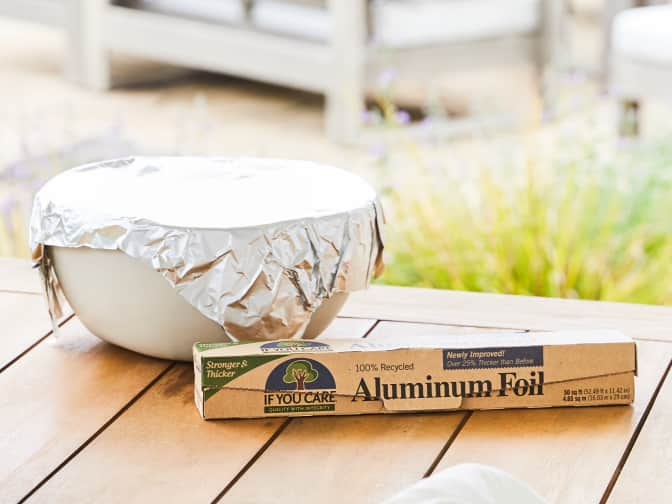
American households spend around $230 a year on holiday decorations. These are a handful of the worst offenders, along with sweet sustainable swaps.
Those shimmery, silvery strands that give your tree an icy, fairytale finish are made from PVC and can’t be recycled. It's also virtually impossible to disentangle the decoration from a live tree, which can pose some recycling issues.
Sustainable swap: For an eco-friendly Hanukkah, Christmas, or Kwanzaa decoration that adds a a touch of sparkle, hang some silver glass (not plastic) globe ornaments, or cut some recycled aluminum foil into circles, and glue them back-to-back along a length of cotton string for a gleaming silver garland.
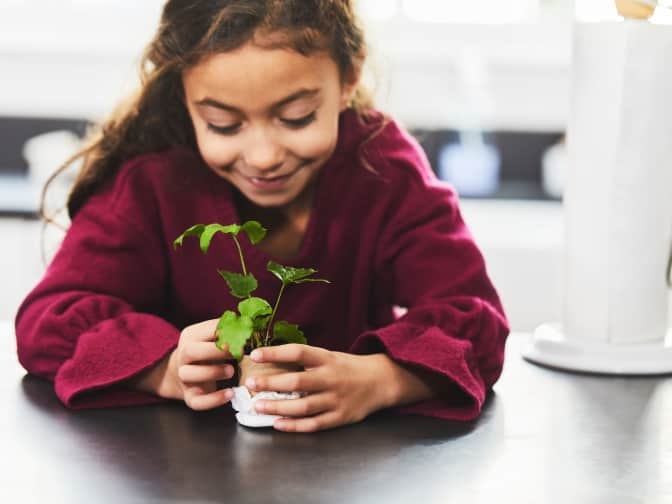
Fake evergreen branches and wreaths — and faux mistletoe and holly — are made from toxic, petroleum-based products that require an enormous amount of energy to produce and which can’t be recycled.
Sustainable swap: Hit your local gardening center for materials and natural holiday greenery before buying more artificial greenery. There’s nothing like the natural scent of pine to bring holiday vibes to your home.
To keep the greenery fresh, cut the stems with gardening shears, and soak them in water overnight to fully hydrate before you decorate. To maintain your live holiday greenery, invest in a plant mister to regularly refresh your plants as well. Then, compost the greenery after the season.
Spray-on flocking, which you can get at your local craft store, goes on your tree and windows, mimicking freshly fallen snow. But this stuff is nowhere near as pure as snow. In fact, it typically contains solvents, propellants, flame retardants, and other toxic chemicals — and it’s very harmful to pets if consumed.
Sustainable swap: You can find dozens of recipes to make your own, nontoxic fake snow — or you can use cotton balls, polyfill, or leftover spider webbing from Halloween.
According to NASA, some parts of Earth — including America’s suburbs — are up to 50 percent brighter between Thanksgiving and New Year’s Day. The Energy Savings Trust reckons that the amount of carbon dioxide produced by holiday lights each year could power 15,500 hot air balloons.
Sustainable swap: As your holiday string lights go kaput, start replacing them with LED lights, which use 90 percent less energy than conventional holiday lights. Solar-powered outdoor string lights are the most sustainable option as they use zero energy, but they’re not as bright as you might like. If you do make the sustainable swap, don’t toss your old string lights in the trash — they can be recycled for their plastic, glass, and copper, but you may need to deliver them to the recycling center or find a holiday lights recycling dropbox in your town.

Not necessarily. Americans purchase 10 million artificial trees each year, 90 percent of which are shipped from China, adding to global carbon emissions. Most artificial trees can’t be recycled, so they end up in the landfill. If you have an artificial tree, use it for at least five years to help reduce its carbon footprint.
Here are some other things you can do to make your artificial tree more sustainable:
Around 30 million trees are harvested from tree farms each holiday season, and Christmas trees grow fast — plus, when one is cut down, one to three seeds are generally planted in its place.
But Christmas tree farms are typically monoculture farms that rely on pesticides that can permeate into waterways and soil, meaning they generally aren't the most sustainable option if you're looking for an eco-friendly fir.
Real trees typically are more eco-friendly than artificial trees, but some better alternatives are definitely cropping up — such as trees made from recycled plastic. Plus, if your holiday tree is sent to the landfill at the end of the season — as seven million trees are each year — it has a far larger carbon footprint than one that’s recycled or composted. Here are some tips to buy the most sustainable real Christmas tree:
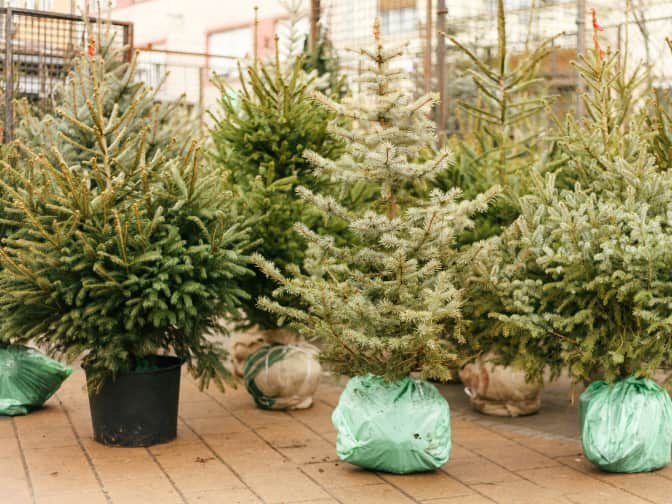
If you're truly looking to green up your Christmas decorations and holiday greenery, consider an alternative to your traditional tree, which ranges from rentable to replantable to repurposing the plant life you have around the home.
Tree ornaments and holiday decoration knickknacks are often made of plastics and resins that have a big environmental impact. You can make your tree extra-special by trimming it with these earth-friendly adornments that won’t take a toll on the environment.
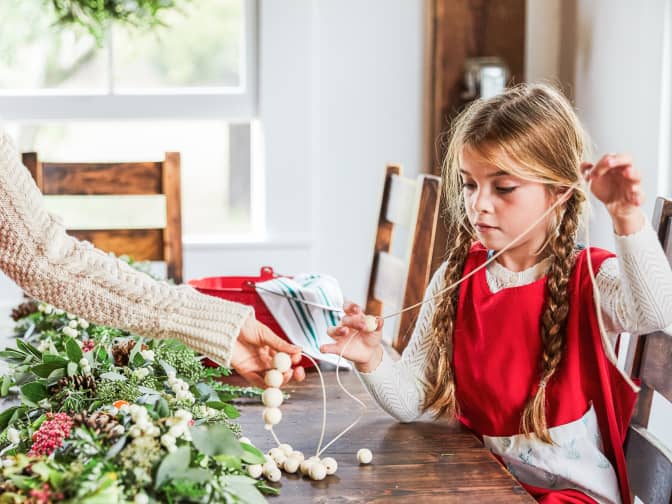
Grove Tip
If your heart is set on traditional ornaments, shop the thrift stores, which have a huge selection of holiday home decor at this time of year. Chances are, you’ll find something that’s one-of-a-kind and destined to become a holiday heirloom.
Stuff is fun, but do we really need more of it? The average U.S. home contains more than 300,000 items, and each year we add to each others’ household clutter, which is a major source of stress for one in four Americans. It’s also a blow to the environment when we give or receive gifts that never get used or end up in the landfill.
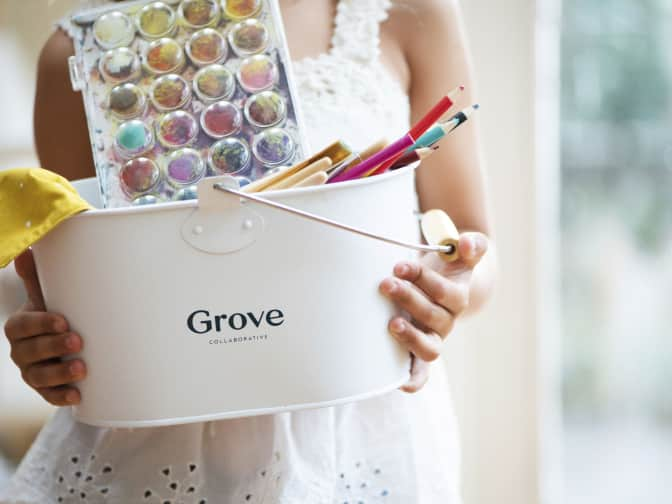
1. Shop locally owned shops and boutiques to find uncommon gifts for everyone on your list.
2. Visit local vintage or antique shops for a one-of-a-kind gift — jewelry, old books, record albums, dishes, collectibles.
3. Find a local artist collective with an online shop, and give the gift of art.
4. Give experiences instead of things — a zoo membership, an online course, a local spa certificate, a national park pass.
5. Consider a useful and practical gift that gives all year long — house cleaning or lawn mowing services, monthly massages, a local brewery or farm produce subscription box, certificates to the car wash.
6. Give children's gifts that aren’t made of plastic — books, art supplies, or toys made from post-consumer recycled materials.
7. Bake up a storm, and give the gift of tasty treats.
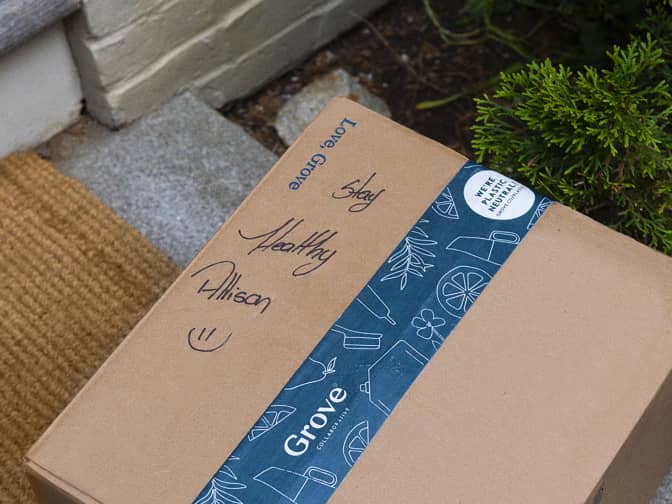
1. If you can, opt for curbside pickup at your local store.
2. Choose shipping options that bundle multiple items together in one box.
3. Religiously recycle your cardboard boxes. If your curbside recycling service doesn’t accept the plastic packing materials, save them, and after the holidays, take them to a facility that does.
4. Consider having gifts shipped directly to the recipient instead of mailing it yourself.
5. Choose green gifts when possible — things made from recycled materials, reusable items, gifts that can be recycled or composted.
Sustainability Tip
For every day you're willing to wait on shipping, you save the carbon emissions equivalent of 200 trees — so think twice before you opt for rush or priority shipping.
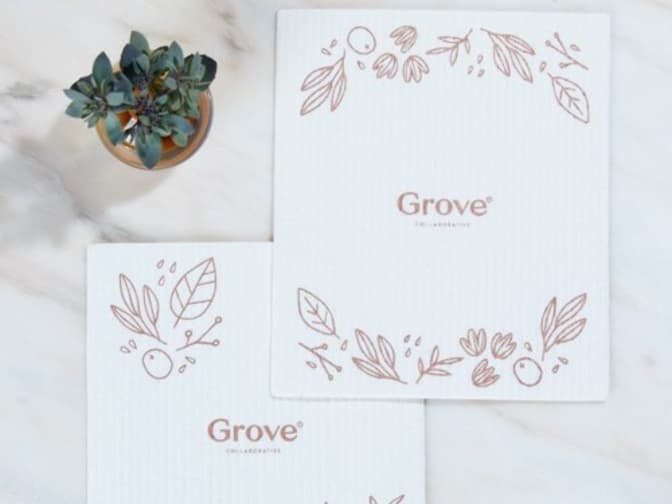
Americans send two billion holiday cards each year — enough to fill a football field with cards stacked 10 stories high. The most eco-friendly holiday cards are of the electronic variety — but if e-cards just won’t cut it for you, here are some ways to reduce the environmental impact of this beloved, 160-year-old holiday tradition.
1. Buy cards made from recycled materials and printed with soy-based ink.
2. Buy locally if possible — see if your favorite local artists or organizations sell cards.
3. Avoid glossy cards and those with glitter or metallic coatings — they can’t be recycled.
4. Consider sending holiday postcards, and skip the envelopes.
5. Think about paring down your list — maybe send e-greetings to the tech-savvy recipients on your list and the ones you see on social media every day, and save the paper cards for your beloveds who choose a lower-tech lifestyle.
If you send a lot of holiday cards, you probably receive a lot, too. Here’s what you can do with them at the end of the season.
Americans spend around $2.6 billion on holiday gift wrap each year, and the British throw away enough wrapping paper during the holidays to circle Earth nine times. Unfortunately, many types of gift wrap can’t be recycled, so even if you put it all in the recycling bin, all that expensive, useless paper goes straight to the landfill.
Ribbons, bows, and tissue paper can’t be recycled — but you can save and reuse them. While some wrapping paper is recyclable, not all recycling mills accept it, so if you end up with gift wrap you want to recycle, check with your provider. Wrapping paper can’t be recycled if it:
Keep in mind that even if your wrapping paper is recyclable or made from recycled materials, it still takes an enormous amount of resources and energy to produce, contributing to environmental pollution. So, how can you wrap up all those doodads and gewgaws while maintaining a carbon-neutral footprint? We’re so glad you asked!
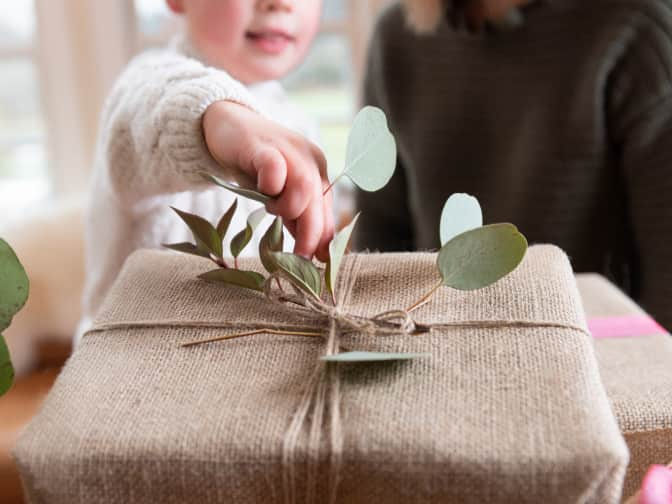
These sustainable wrapping paper ideas are way cooler than the rolled-up stuff — and some of them are probably lying around your house right now. Pro tip: If you need to make bigger sheets for large gifts, just tape smaller sheets together.
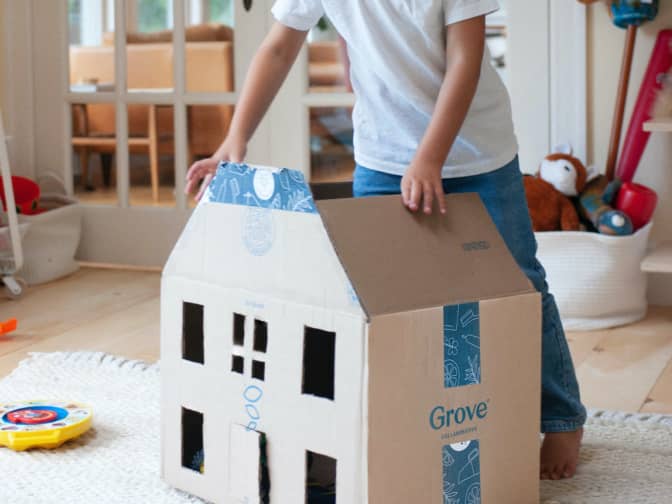
Furoshiki is the traditional Japanese art of gift wrapping — more specifically, it’s the squares of fabric used to wrap and store things. Furoshiki can be big or small, depending on the size of the gift you’re wrapping. You can find numerous furoshiki folds for wrapping things of all different shapes and sizes. Turn these items into festive furoshiki:
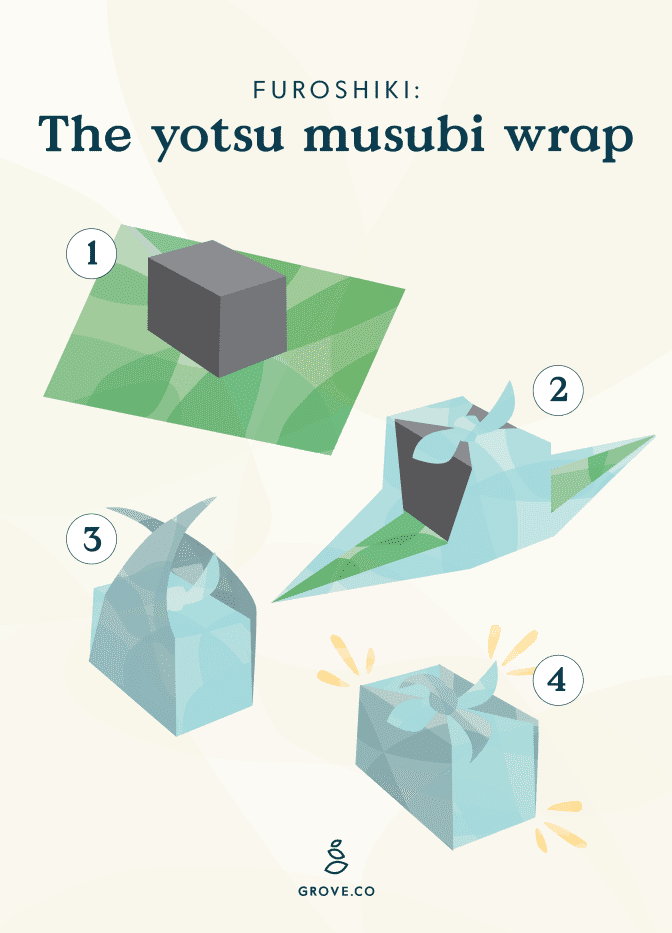
Grove Sustainability Tip
Potato chip bags aren’t recyclable, because the shiny, silver interior coating is made from mixed materials — usually plastic and aluminum. Instead of tossing them in the trash, wash chip bags out with a mild, natural dish detergent, and cut them into flat sheets to use for gift wrap.
They’ll end up in the landfill eventually, but making them pull double duty helps to reduce their carbon footprint and makes your gifts super festive.
The dust bags that your shoes, sheets, or Crown Royal came in
A tote bag, which becomes part of the gift
Old (but clean) patterned pillowcases — tie them at the top with twine or recycled ribbon
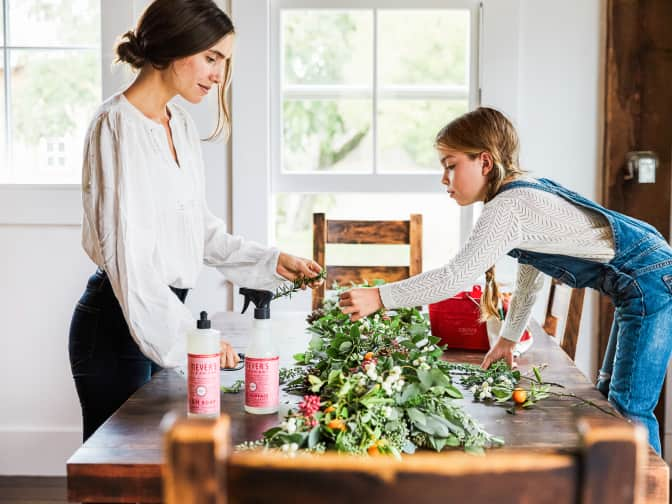
A little two-sided tape or a hot glue gun will work wonders as you embellish your eco-friendly gift wrap with some combination of these clever, classy alternatives to store-bought bows.

We've pulled the top 21 zero waste gifts determined by Grove members. Have a look!

We've pulled the top 7 soy candles perfect for gifting as determined by Grove members. Have a look!

Jade rolling feels good, looks pretty, and is low maintenance. But does it prevent signs of aging and how do you do it?
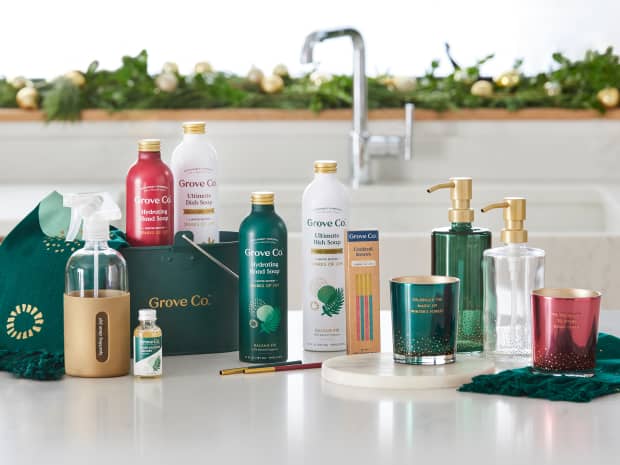
Having holidays at a friend's house? Bring one of these unique gifts to thank them for their hospitality.